News
Celebrating 10 Years of the IHSAA's Champions Together Program
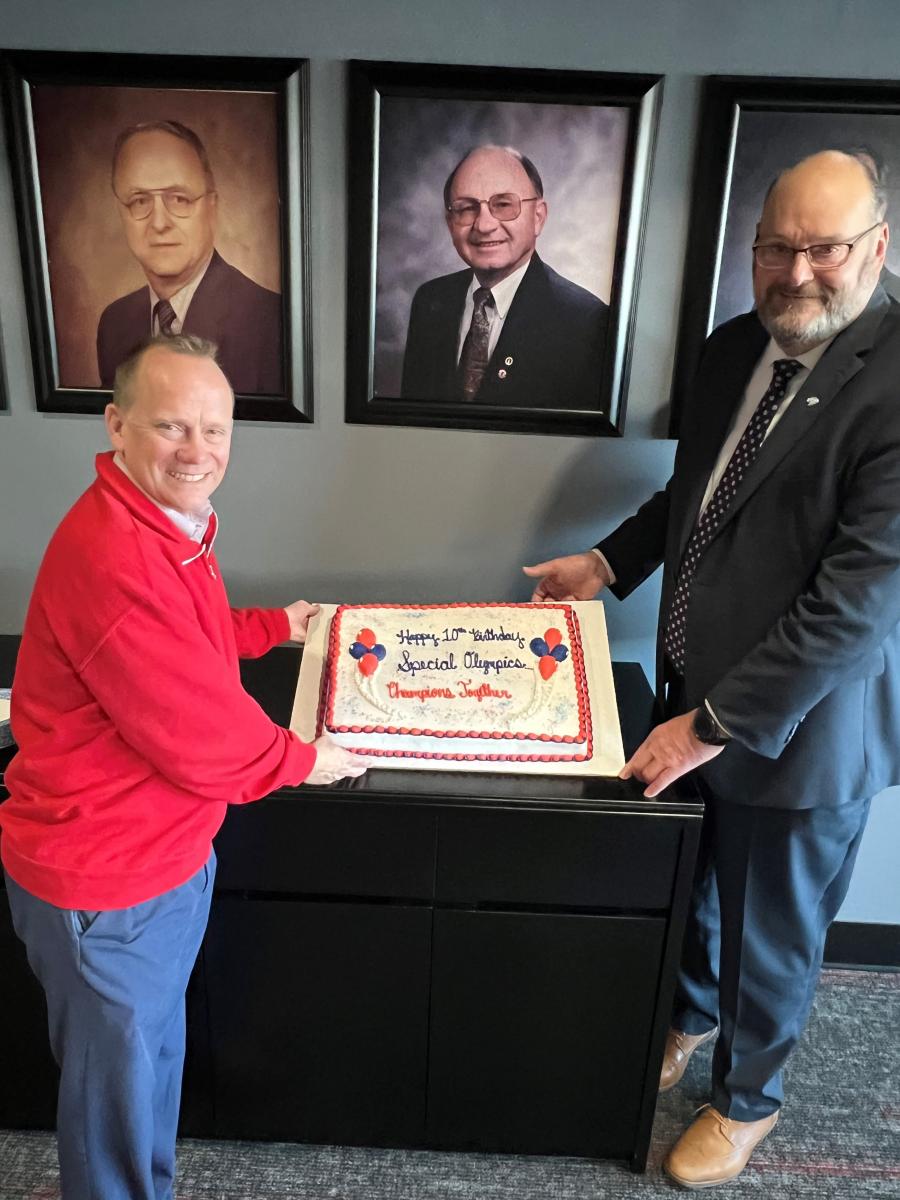
The IHSAA's relationship with Special Olympics Indiana was born out of a give-back challenge to its Student Advisory Committee
The applause reverberated inside the Bloomfield High School gymnasium seven years ago, as Mitch Bonar proudly stepped away from the podium with his Noblesville High School varsity letterman’s jacket draped around his slender frame.
A co-captain of the Noblesville Millers’ Indiana High School Athletic Association (IHSAA) Unified Track and Field team, Bonar, then a senior, had just finished speaking on his painful and, oftentimes, lonely childhood experiences.
Bonar recalled his cruel past as a student with disabilities and no outlets to turn to for support, a teenager with cerebral palsy that faced not only physical hardship but belittlement for merely existing.
Bullied for the way he walked and ridiculed by some of his peers for people pleasing in a desperate attempt to establish any semblance of friendship, Bonar’s tale both touched and appalled those attending the assembly.
His plight wasn’t uncommon. Sadly, it was the norm, though rarely discussed or addressed openly. Those isolating days were his reality until the change, before he found Special Olympics Indiana and IHSAA Champions Together.
As his story unfolded from tragedy to triumph, Bonar reflected on his 13 years of physical therapy, how he couldn’t tie his own shoes until he was 16 years old, and how his life was truly altered for the better because of the IHSAA Champions Together program, which he championed that day.
“You see, I was always that kid with my head down, walking down hallways, knowing everyone but not being noticed. Now, after being a part of my high school unified track team, everyone knows my name,” Bonar remarked during the 2015 assembly. “I didn’t feel like I totally fit in until I was competing for my school and had real friends at school.”
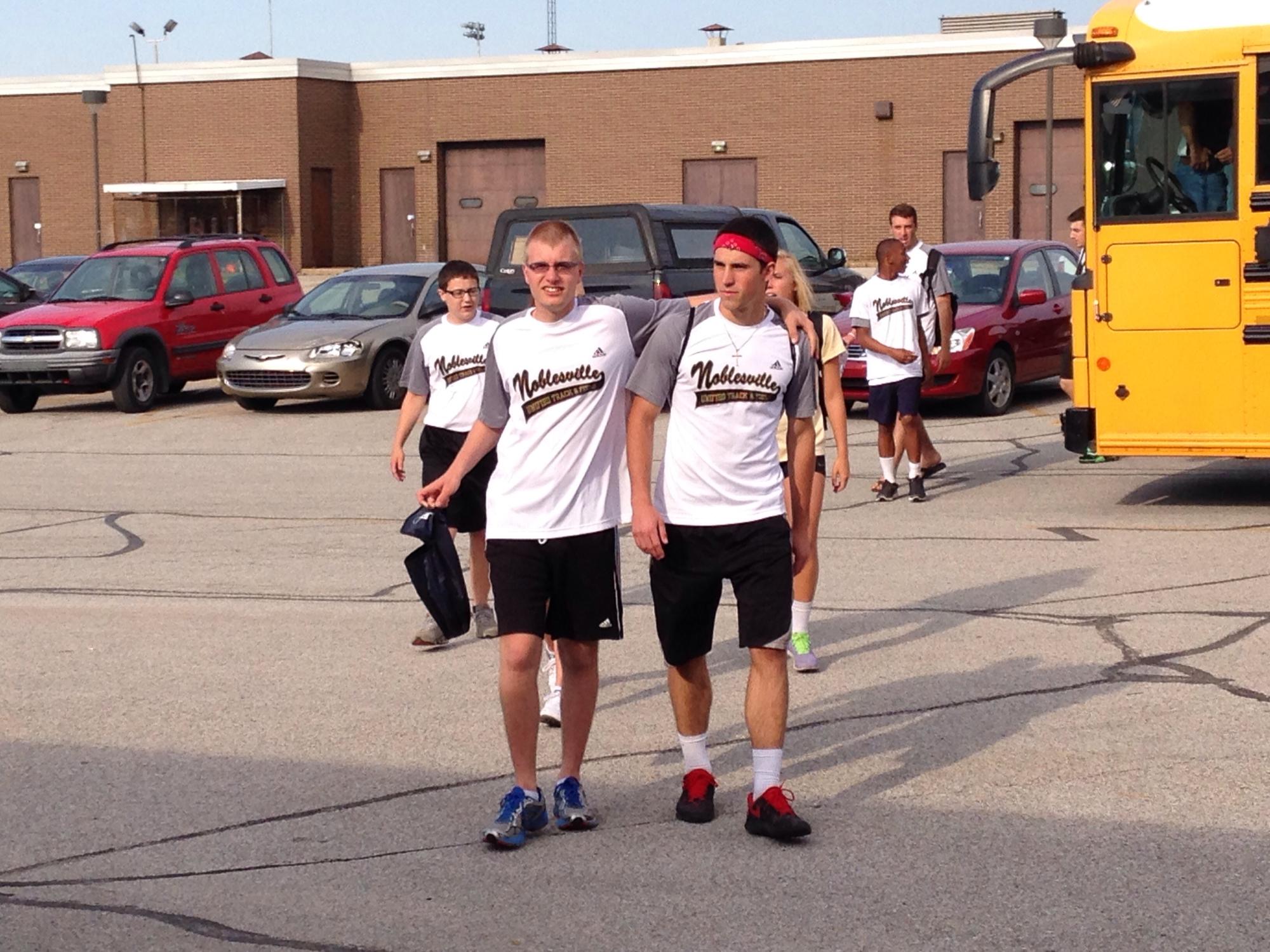
Mitch Bonar (left) was a member of Noblesville High School's Unified Track & Field team.
Able to compete in seven sports through Special Olympics Indiana (SOIN) and the IHSAA Champions Together program, Bonar later graduated with a degree from Indiana Wesleyan University before earning a seat on the Special Olympics Indiana Board of Directors.
Bonar’s journey is one of many throughout the Hoosier State due to what he called, the “inclusion revolution,” the now 10-year anniversary of a life-changing partnership between Special Olympics Indiana and the IHSAA.
“It’s been really rewarding to see how schools have embraced the program and the impact that it’s had on schools, student-athletes and communities over the years,” retired IHSAA Commissioner Bobby Cox said.
CHALLENGED TO GIVE BACK
Through education-based athletics, humanity naturally finds a way to thrive beyond the divides.
Many boundaries typically considered insurmountable fade away once education-based high school athletic contests begin. The obstacles that impact everyday life can cease to be, momentarily, when student-athletes are provided an opportunity to compete, to become part of something bigger than themselves.
But that wasn’t the case for everyone, and Cox knew it was time to challenge tomorrow’s future leaders to act in the present after attending a Kiwanis Club meeting in the fall of 2012.
“Every meeting I would go to, there would be a necrology report. Names of club members who had died would be read, that would go on for around 15 minutes. It was somber,” said Cox, who served as IHSAA commissioner from 2011-20. “At the end of the meeting, there would be a membership report. Sometimes there would be one new member, and sometimes, there wouldn’t be any.”
On his drive back to the IHSAA offices, Cox reflected and thought, “That’s a problem. We’re not going to have service clubs any longer if we don’t start teaching young people about servant leadership, and the fact that you don’t get an extrinsic reward every time you do something. We need to be doing things that will teach young people to give back to their communities and why you do that.”
The question for Cox was, who would take the lead? How can the IHSAA and its member schools help offset impending cultural issues and the potential “decay of our communities”?
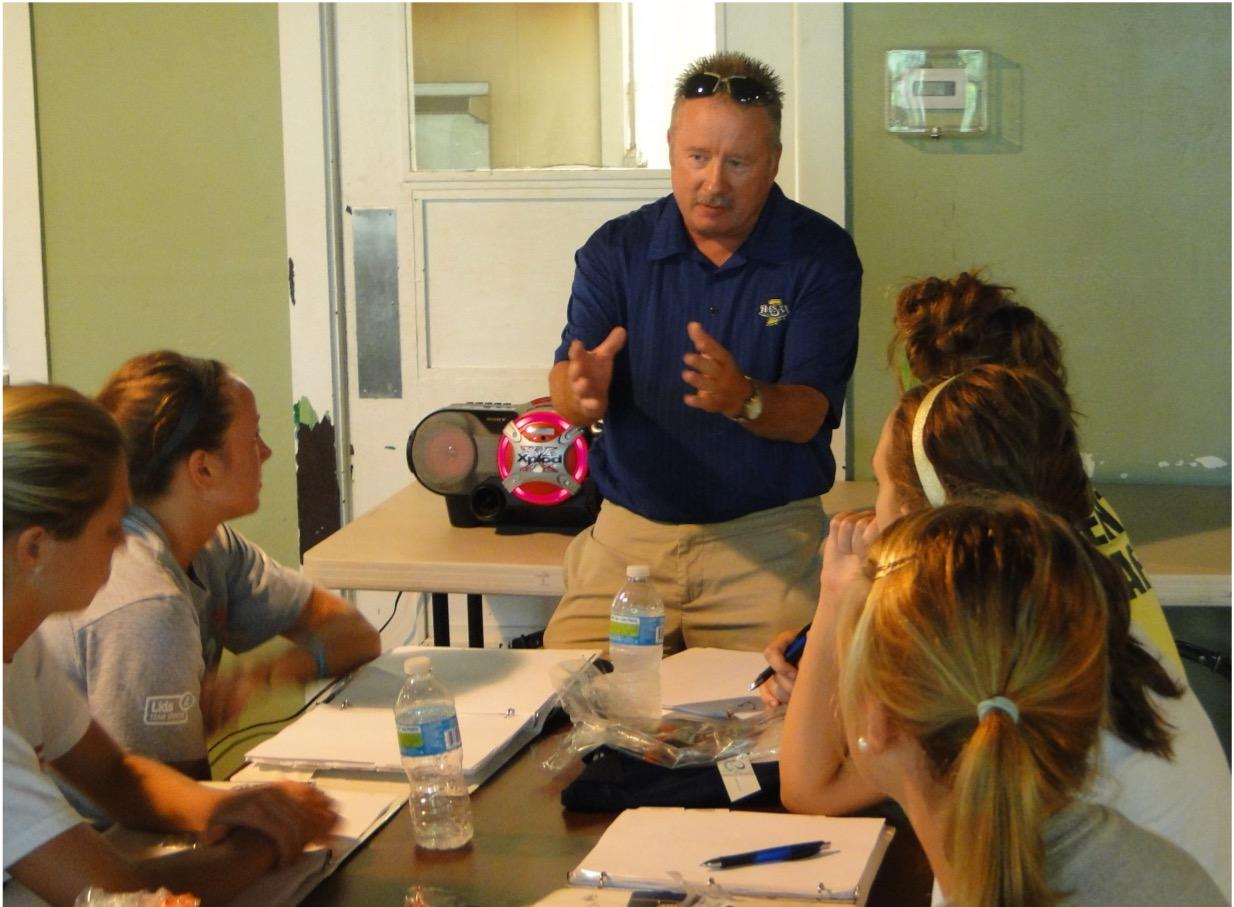
Former IHSAA Commissioner Bobby Cox meets with members of the IHSAA Student Advisory Committee in 2012.
In August 2012, he decided to challenge the IHSAA’s Student Advisory Committee (SAC), which consisted of “18 of the best and brightest young people in the state.”
Made up of nine juniors and nine seniors from the IHSAA’s more than 400 member schools, the SAC concept was launched in 2002-03. However, their role within the outreach of the IHSAA was limited.
“I didn’t feel like we were doing a very good job of utilizing their talents and giving them a meaningful experience,” Cox recalled.
Attending the SAC’s quarterly meeting that fall, Cox tasked the group to do more.
“I challenged them. I said, ‘We need to do a better job as an organization of giving back and there’s a reason why. I reminded them, ‘You get free uniforms, a place to play, transportation. You are often getting fed, and you get expert instruction and mentoring, but what are you giving back,’” Cox said.
“These are smart kids, and they were looking back at me like I was from Mars. They asked, ‘What do you mean, giving back?’ I said, ‘Exactly. These things aren’t free. You need to give something back in appreciation for what you’re getting.’ For these kids, it didn’t take them very long to figure out that was right.”
The committee of: Hayley Betz (Evansville Harrison), Josh Clark (Perry Meridian), Amber Cowell (Culver Academy), Nathan Criss (South Putnam), Anthony Douglass II (South Bend Washington), Alex Dunn (Jay County), Tessa Faulkens (North Central), William Kelly (Lakeland), Shelby Merder (Jasper), Mac Norton (Mooresville), Brynn Olinger (Plainfield), Turner Perkins (Danville), Sara Slabaugh (Bremen), Ellen Smith (Plymouth), Kirsten Spangenberg (Boone Grove), Ally Stein (Hamilton Southeastern), Taylor Turchi (North Vermillion) and Casey Yager (Rushville) sprung to action.
“I told them, ‘I want you to think about some type of opportunity where you can create servant leadership chances, and I want it to be in every county in our state,’” Cox said. “You decide what that looks like, and they did.”
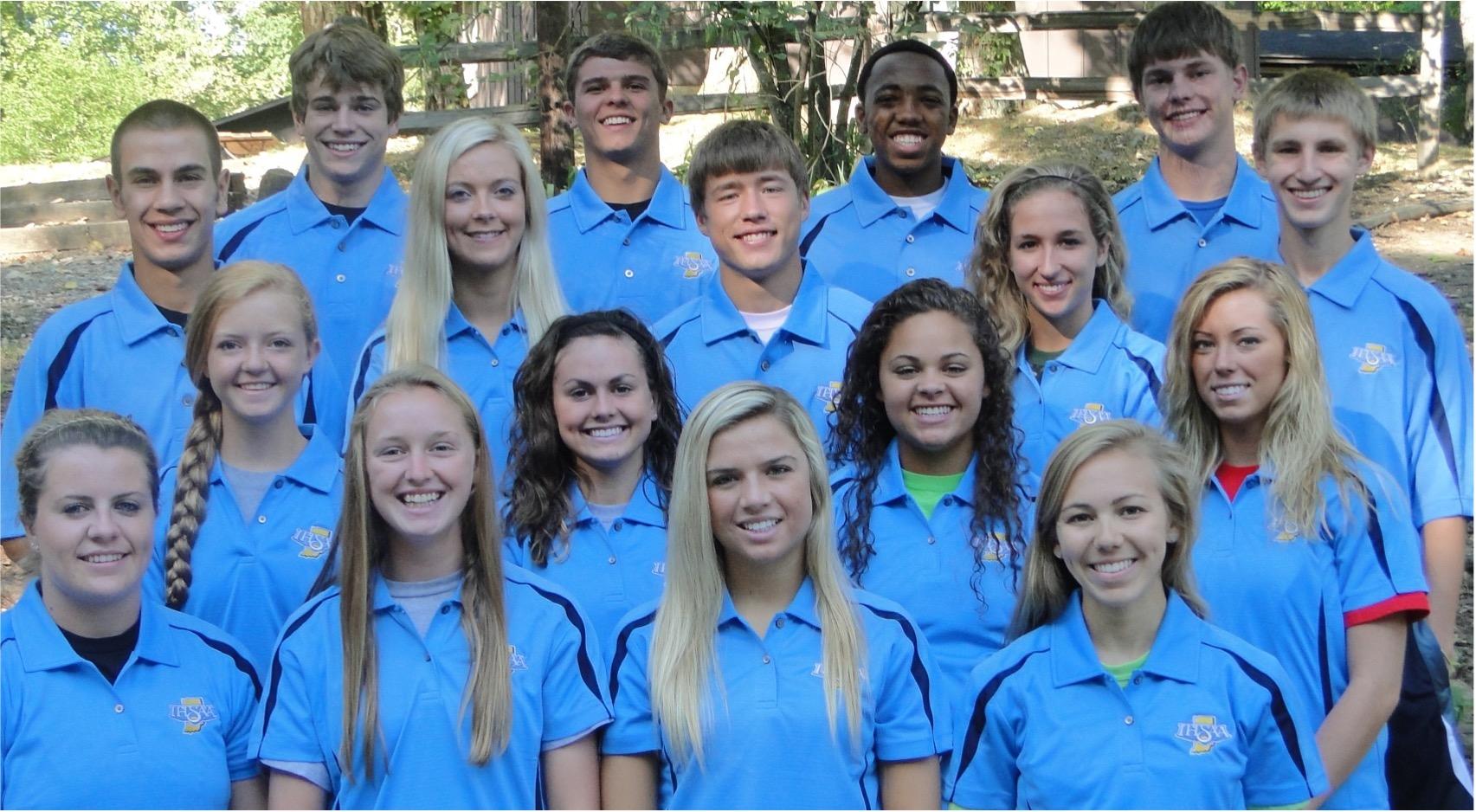
The IHSAA's 10-year-old partnership with Special Olympics Indiana was born from the efforts of this group of Hoosier teens, the 2012-13 IHSAA Student Advisory Committee.
FINDING A PARTNER
Utilizing the NCAA Student-Athlete’s Advisory Committee model of supporting not-for-profits, the SAC decided to pursue hearing presentations from prospective partners in October 2012.
The SAC unanimously voted to establish a partnership with SOIN, and SAC President Ally Stein and Vice President Bryn Olinger approached Cox to seek his permission.
The SAC’s work wasn’t done, however. It had just begun.
In November 2012, the SAC appeared before the IHSAA Board of Directors and their partnership request with SOIN was unanimously approved.
“It illustrated to our committee and staff that these are strong young people with energy and compassion, and they can make some really good decisions,” Cox said. “Members of our executive staff like Sandy Searcy, Robert Faulkens, and Kerrie Rosati have been the conduits of meeting with them on a regular basis and offering guidance and support as needed.”
On December 17, 2012, a joint media conference was held to announce the partnership between the IHSAA and SOIN. Later that month, the first unified sports event in Indiana was held between the SAC and SOIN athletes.
From the experience, the Champions Together program sports umbrella was born, later to become IHSAA-sanctioned state tournaments for Unified Track and Field in 2013-14 and Unified Flag Football in 2018-19.
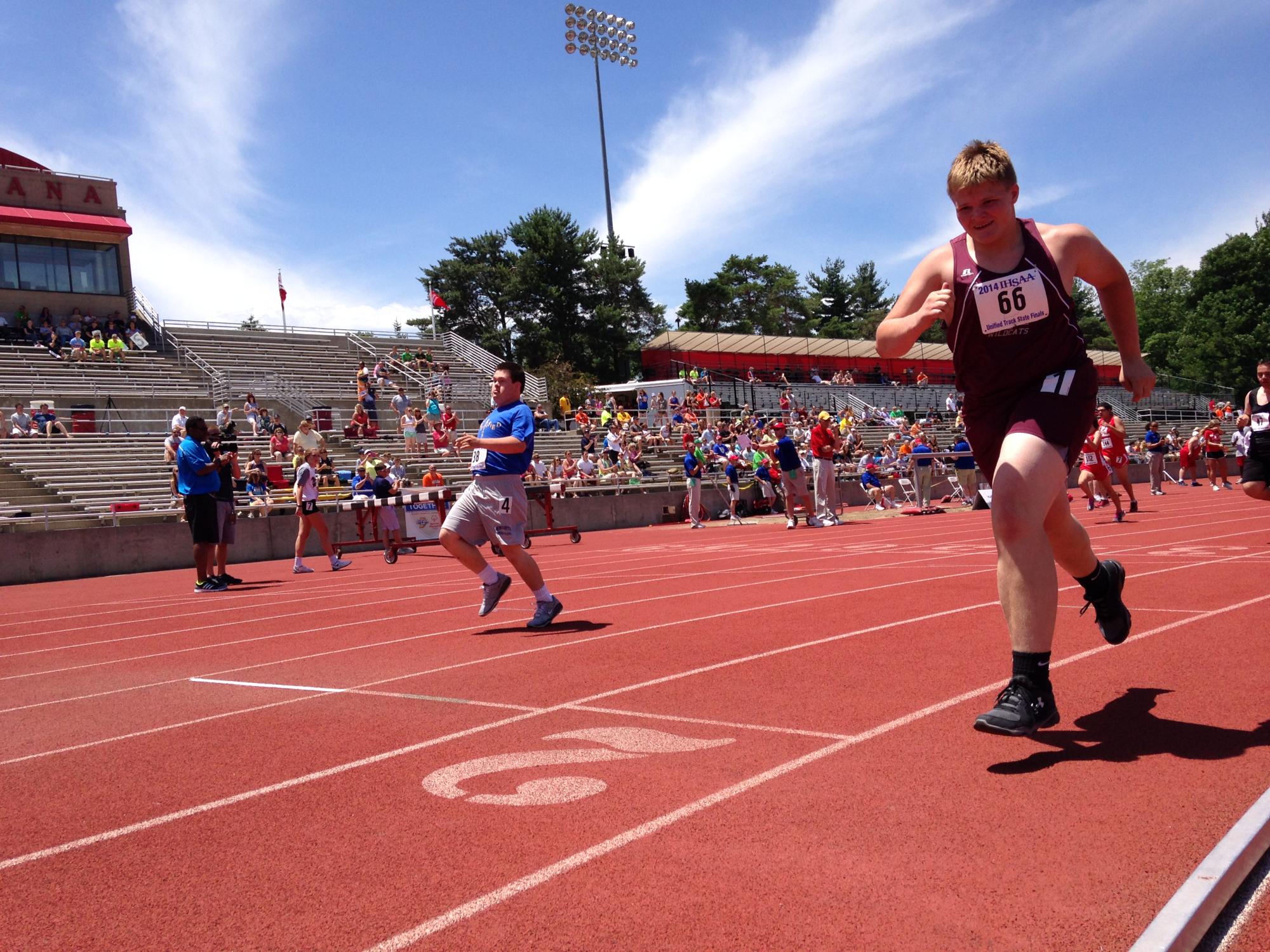
High school student-athletes competing in the IHSAA Unified Track & Field State Finals in Bloomington.
SPREADING THE WORD
For six months, beginning in January 2013, SAC members campaigned the Champions Together program, beginning at their own schools, which could serve as models for the IHSAA membership.
They advertised and discussed the program in preparation for the 2013 Fall IHSAA Principal meetings.
Shortly afterwards, the SAC began exploring the creation of unified sports as part of Champions Together including bowling and bocce, which also offer state championships through the SOIN.
In June 2013, the Champions Together banner program consisting of inclusive student leadership, all-school awareness, unified sports and fundraising was finalized with the guidance of Champions Together Director Lee Lonzo, who served as the head of the partnership between the SOIN and the IHSAA.
The groundbreaking partnership was endorsed by Indiana Governor Mike Pence in June 2013 before the new 2013-14 SAC was announced.
At the 10th Annual IHSAA Student Leadership Conference that month, the 2012-13 SAC presented a check for $7,000 to SOIN President Mike Furnish, a staunch supporter of the partnership’s expansion and development, to send two SOIN athletes to the Special Olympics USA Games.
In the fall, the SAC presented the Champions Together program to students across the state, while Cox promoted the concept.
“As I spoke at principal meetings, I conveyed the fact that all of them are being evaluated by their superintendents, their school boards and communities based upon the climate they are creating in their schools. I asked them, what kind of climate do you have? What’s your dropout rate? What’s your rate of discipline incidences? How are you dealing with bullying? What inclusionary activities are you conducting in your school? At the time, that number was low,” Cox said. He then conveyed “this is a way for you to include everybody in your school.”
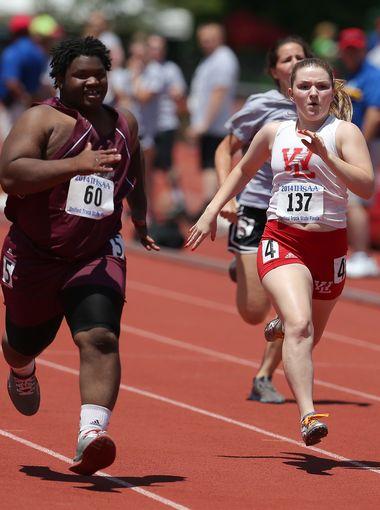
High school student-athletes competing in the IHSAA Unified Track & Field State Finals in Bloomington.
THE INCLUSION REVOLUTION CONTINUES
Under Lonzo’s leadership, Champions Together ranked among the largest Unified Schools programs in the nation as of 2019 with 125 high schools earning banners and with more than 600 schools at various levels participating.
The key first step focuses on finding students that share a similar heart, mind and commitment to make a positive difference. Champions Together student leadership teams require 12-20 students with an emphasis on inclusion of all grade levels and genders from both general education and special education classrooms.
Champions Together was created to be student driven, though an adult mentor with similar vision and support from an administrator are needed to help coordinate meetings and provide supervision.
“The effect this program has had on the partner athletes and regular-ed students is just as important as it is for the student-athlete. It creates a better climate in the school,” Cox said. “When you have your leading student-athletes and students in the school establishing relationships with these intellectually challenged kids, the incidences of bullying and making fun of those kids with challenges are going to decrease because it’s not going to be looked upon favorably by those leaders of the student body. That’s what we’re trying to accomplish.”
Offering students with intellectual disabilities an opportunity to compete and represent their schools, like Bonar, is important and as a result has sparked shared experiences among students that previously may have never bonded.
“Not only does unified provide an opportunity for those that might not be able to participate in athletics but also to compete,” said Brian Avery, who was hired as IHSAA Champions Together Director to succeed Lonzo. “The trophy we give away for Unified Football and Unified Track and Field is the exact same trophy we give away for all the other IHSAA sports. It’s more than participation. It’s competition.
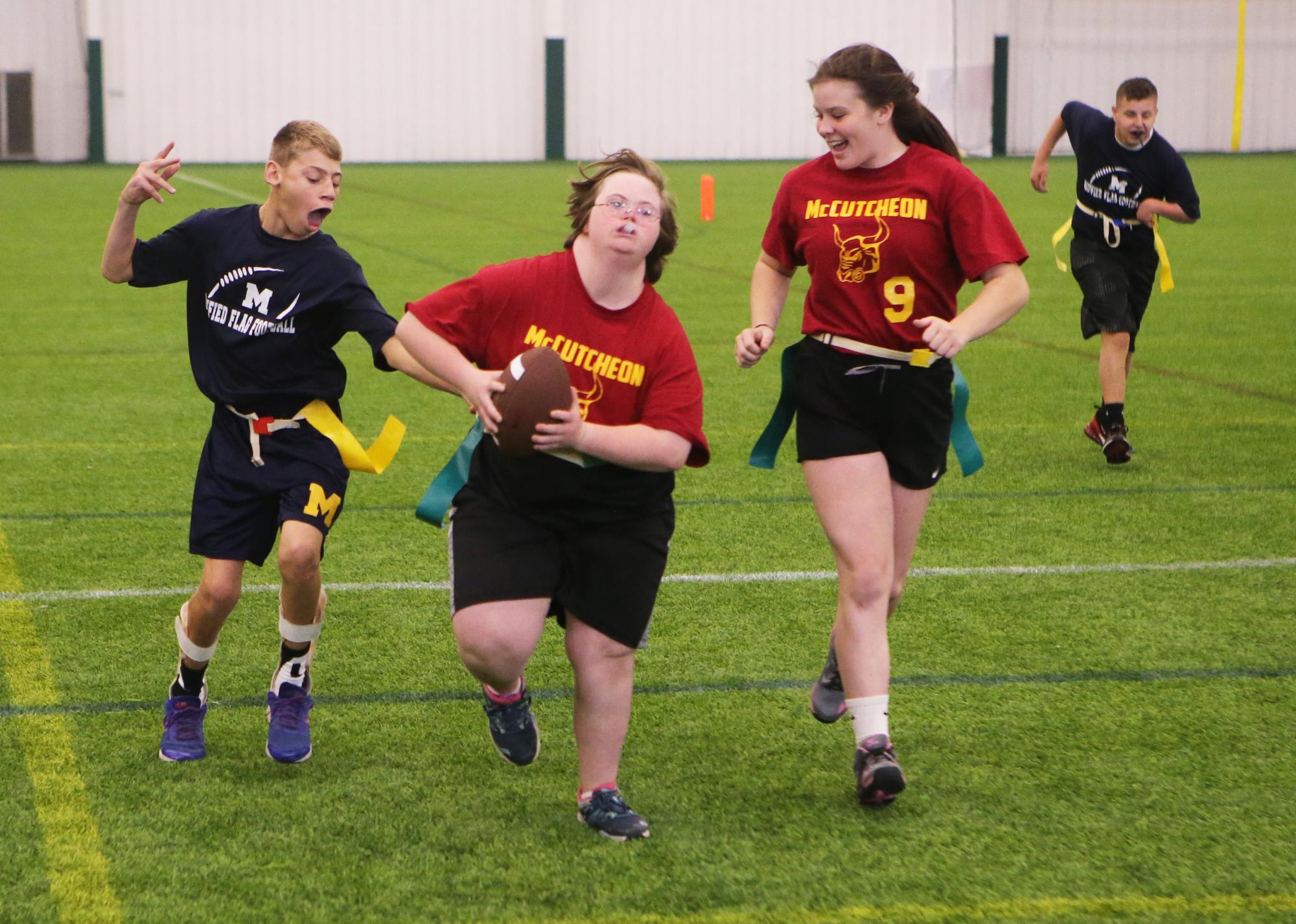
High school student-athletes from McCutcheon and Mooresville competing in the IHSAA Unified Flag Football State Finals at Grand Park in Westfield.
“I’ve heard special education and Special Olympics personnel say people with disabilities don’t want to be given things. They don’t want you to feel sorry for them. Just give them opportunities and don’t lower your standards for them. They can achieve things that they didn’t think possible, like any other student or student-athlete can,” Avery added.
“Some of the best testimonials I’ve heard about the benefits of unified sports come from regular education students who’ve voiced how a student with disabilities had changed their life through a relationship that likely never would have taken place if it weren’t for programs such as this,” Avery said. “We’re benefitting on both sides, which is important.”
COMPETITIVE BUT LEVEL PLAYING FIELD
As with non-unified athletics, unified competition gives student-athletes a chance to feel included, but with any contest, there are rules as well. The essence of unified sports centers on a collective competition with a singular aim.
“One thing about unified sports is that it’s truly a unified event. The partner athlete isn’t dominating the event. The student-athlete with an intellectual disability contributes at an equal part,” Cox said. “The format for track and field allows that to occur.”
Both competitors tally points based on event placement. The student-athlete in that application is just as important as the partner athlete. That’s what the whole notion of equality and inclusion is all about.
There were 13 schools in the first year of the IHSAA Champions Together Unified Track and Field state tournament. Last year, there were over 110 schools that participated at the sectional level.
No overall state champion is crowned in one event. There are several based on grouping, which circumvents schools from overloading a competition by limiting the number of participants from each school. This format allows more students to achieve, not just be rewarded for participation.
“In the 39 years I spent as a teacher and coach or an athletic director, the most memorable and positive events I can recall were those that kids designed for kids and involved the entire school community, not just student-athletes,” Avery said. “The looks on people’s faces when both of those things happen are priceless.
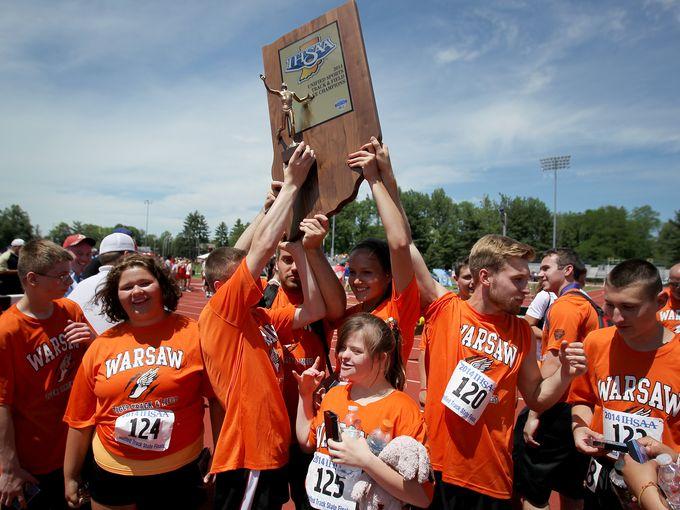
Warsaw High School won the Inaugural IHSAA Unified Track & Field State Championship in 2014.
MORE THAN SPORTS
The IHSAA Champions Together program has also impassioned communities and families to pass it on.
Recently, the IHSAA Foundation introduced the Parker Amet Unified Sports/Champions Together Scholarship, which awards $1,000 to one IHSAA Unified Sports/Champions Together partner-athlete.
Parker Amet, a student at Carmel High School until 2016, was born with microcephaly and was actively involved in IHSAA Unified Sports and Special Olympics. His unified track and field partner-athlete, Bailey Padgett, a standout tennis player at Carmel, built a profound relationship with Amet through the IHSAA Champions Together program.
Padgett went on to compete at Butler University, and her parents, Bill and Libby, aided in the creation of the scholarship due to Amet’s positive attitude as a beacon for the student body.
“When we can bring a school community and groups of students together and blur the lines between those with and without disabilities, we’re doing great things,” Avery said.
For Bonar, the IHSAA Champions Together program and SOIN paved the way for acceptance, inclusion, confidence, and opportunity such as a serving as Grand Marshals with his unified partner Abby Abel during the 2018 Indianapolis 500 Festival Parade.
As Bonar stated during his 2015 assembly speech, “No one is left behind. My new friends are loving, believing, and trusting. Our team sticks together. They have my back. Unified track has changed them and has changed me.
“I am just one person, but I have made a huge impact at my school,” he continues. “I know at my 50-year reunion, we will be talking about how we changed our school for the better. We are treated equally. We have fun and we are treated as individuals, not as someone who cannot do something.”
Change arises with taking a first step, much like Bonar, who one day decided to speak with former Noblesville High School Athletic Director Michael Hasch about the IHSAA Champions Together program. Hasch served as athletic director at Noblesville from 2010-17 before eventually becoming the Senior Director of Unified Schools at SOIN where he remains a fierce advocate for the initiative and the organization’s partnership with the IHSAA.
That idea is shared by current IHSAA Commissioner Paul Neidig and his staff, who are focused on doing what is essential to see the Champions Together program’s growth and outreach continue throughout the state.